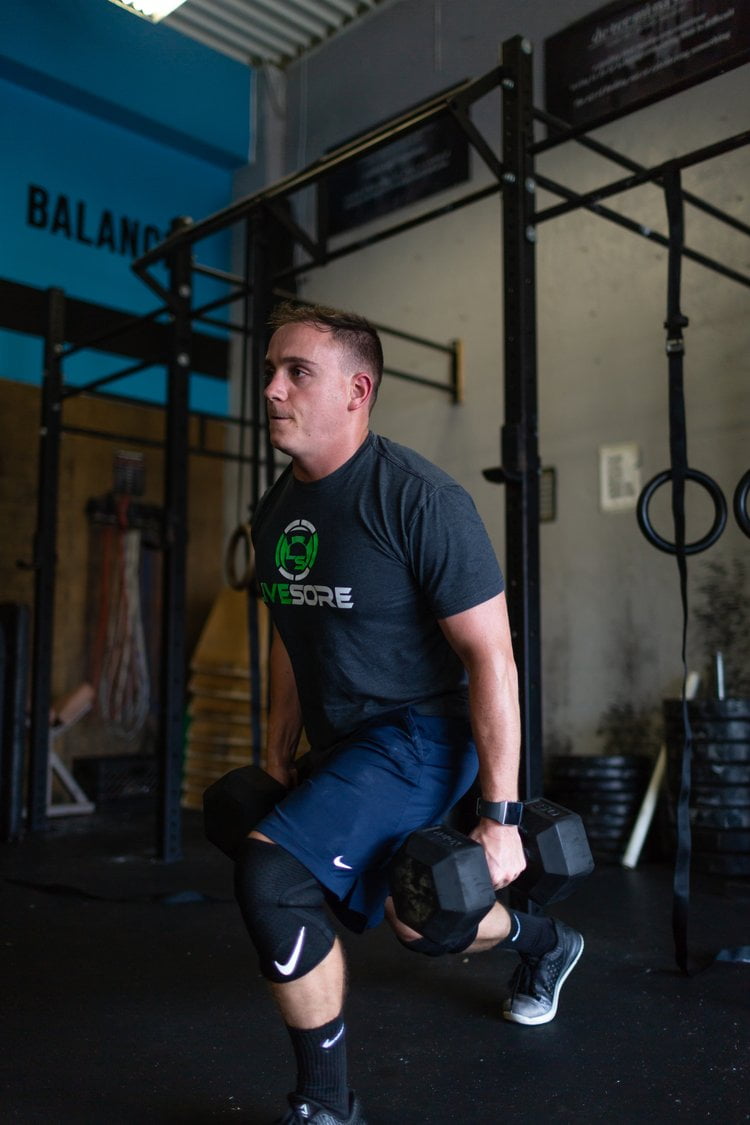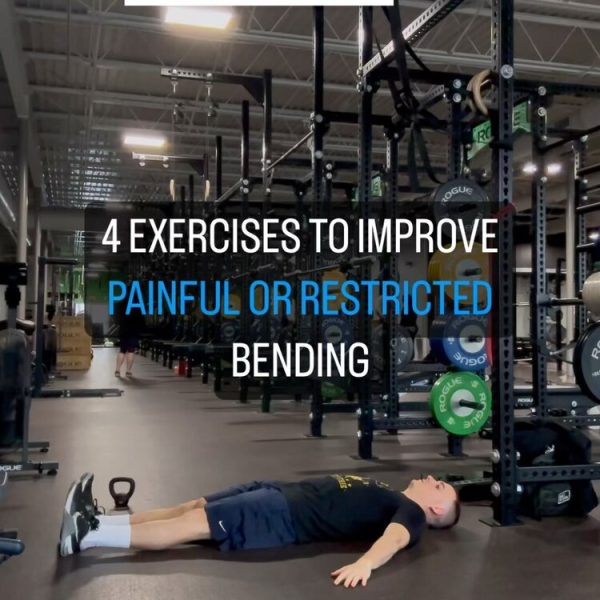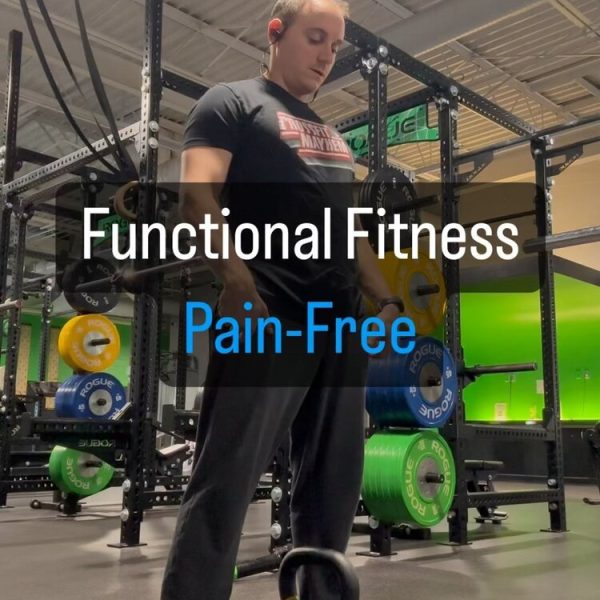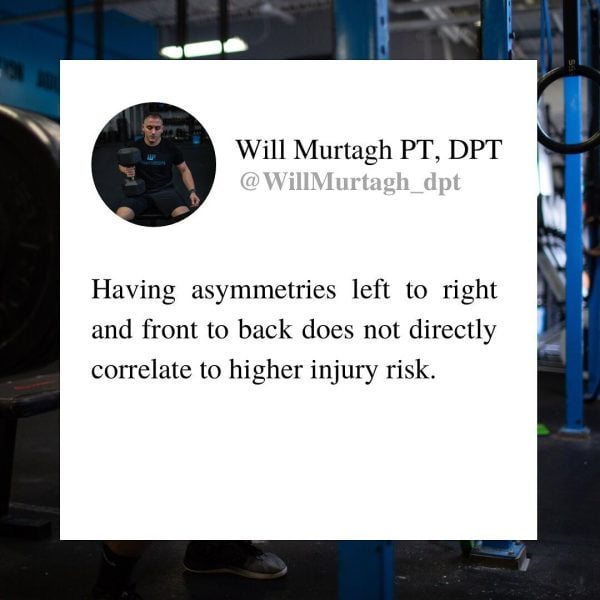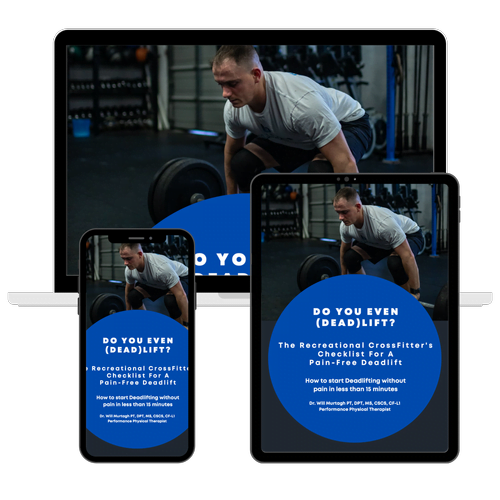Dr. Will Murtagh is a performance physical therapist and writer who helps Fitness Athletes elevate their fitness and train pain-free.
Any training program needs to be built on principles. Whether you’re a coach writing training programs for athletes or you’re an athlete writing your own training program. Principles act as a guiding light to give the program structure and ensure they are safe, effective and efficient. I really started to value the principles of my program design when I was working as a Strength & Conditioning Coach for Stony Brook University, a Division 1 athletic program. When you are writing programs for athletes at that level, your programming needs to be air tight on the three factors listed above. The programs you assign to your athletes need to be effective, I think that’s a given. But, they also need to work in conjunction with the other demands that are placed on the athletes such as practice and class yet also need to be efficient since in some instances you only get the athletes for two hours a week. Your principles allow you to check these boxes and avoid scrutiny by sport coaches because there are reasons for everything you are doing in the program.
One of my most important principles for writing training programs for athletes is the use of the six foundational movements. These include squat, hinge, lunge, push, pull, and carry. Most athletic endeavors are based on these six categories of movement or are variations of them. For the purpose of this week’s blog we’ll be diving into unilateral training or the lunge category. The lunge is a single leg movement, which are critical in the development of an athlete. But why is this the case?
1) You’re likely stronger on one leg
If you are familiar with single leg training and you have spent time in the trenches training the movement pattern with intensity, you’ll likely have noticed that the combined maximum weight you can do unilaterally (one leg) does not add up to your maximum weight you can lift bilaterally (two legs). This lag in strength is termed the Bilateral Deficit (BLD).
The exact cause of the BLD is largely unknown, as well as it varies to a great deal from athlete to athlete. There are purposed causes for the phenomenon, but, the research is still pending on what exactly causes it. What is known is that the BLD is related to the Central Nervous System and its ability to generate force when two legs are being used to lift a load. Some theories include, unsynchronized timing of muscle activation in the lower extremity when two legs are used, increased postural demands on two legs vs one leg, as well as task familiarity. Regardless of the cause, the phenomenon is real and we can use it to our advantage.
What does this mean for athletes that are training? If we re-visit the SAID principle, the adaptations from training the body makes are dictated by the demands placed on it. In other words, if you want to get strong, you need to lift heavy. The heavier the weight that we can successfully lift and recover from, the stronger we will get over time. In light of this, it would make sense that if we can move more weight unilaterally than we can bilaterally than we should incorporate as much unilateral training as possible. It is also worth noting that although the BLD exists, unilateral training has been shown to positively effect bilaterally training. So if you’re worried about losing your back squat, rest easy, if you’re single leg strength goes up you’re double leg strength shoots up with it.
2) Increased metabolic demand on the lower extremity
Next, let’s talk about the demands that are placed on the lower body when we are doing unilateral leg training. There is a saying that goes something like “if the training adaptations are to be great, than the training must be severe”. For big gains, the training needs to be hard. It makes sense that If we move from using two legs, to using one leg to move our body weight plus an external load, the leg muscles must work that much harder to successfully complete the rep. Since the results from training are dictated by the dose response of the body caused by the training prescription, the higher demand we can place on the muscles the quicker and more pronounced the training effect that will occur.
I spoke about strength adaptations as a result of unilateral training, but unilateral training is especially effective for hypertrophy training or muscle building. Hypertrophy occurs when the muscle cells are brought to the limits of their capacity. Unilateral training elicits significant metabolic stress because the muscles of the lower body are being asked to produce ATP at a much more significant rate. This is a potent stimulator of hypertrophy and thus produces metabolites such as lactate, hydrogen ions, inorganic phosphates and creatine which further promote gains in muscle size. In addition to metabolic stress, unilateral work causes a high amount of muscular tension, muscle swelling and causes significant muscular damage, in most cases to a greater degree than double leg training. The body senses this through cells called satellite cells which also contribute to muscle growth. Then, myogenic pathways are activated like the mTor pathway and a host of hormonal reactions take place that are conducive to muscle growth. These include, spikes in Growth Factor, IGF-1, FGF, HGF, Growth Hormone, Testosterone and more. These same hormones also play a key role in improving body composition. So if you want to get, strong, jacked and ripped – Unilateral training should be in your program.
3) Correcting asymmetries and imbalances
I don’t want to sound like I am demonizing bilateral leg training. The back squat and the deadlift are just as much foundational as the lunge and the single leg Romanian deadlift. However, it’s worth pointing out the very clear benefits of unilateral work. One of which is addressing muscular imbalances that occur.as a result of chronic bilateral training. You may not realize it, but when we push the weight on exercises like the back squat and the deadlift there are minor deviations in form or activation patterns based on tightness, motor coordination etc. Over time, these can manifest themselves into imbalances left to right that further cause form deviations when weights get heavy. When one side has to compensate for the other, the workload goes up for that muscle group and as we know from previous blog posts, if these muscles can’t recover, they weaken and then the muscle itself, the tendons or the joints they act on are at risk for injury or over use.
Unilateral work can correct this by training each side individually and preventing these compensations in form. When we remove the compensations and get on one leg, we can more precisely target muscle groups or sides that are lagging behind and progress them to be more symmetrical from side to side. A more symmetrical musculoskeletal system is less likely to have form deviations in bilateral movements that prevent excess workload or stress on muscles, tendons and joints. You may have experienced this if you have ever done a single leg work out and find that one side is more sore than the other. The side that is more sore was “less trained” and was less accustomed to being worked so it responded with increased soreness. A rule of thumb when addressing asymmetries is to always let the “weaker” side dictate the weight that is used and start the set so you don’t further increase the difference side to side.
4) Most sport is played on one leg
This is probably the most applicable to athletes that are training for field sports like football, soccer, hockey, basketball etc. because to my knowledge, strength sports are almost always on two legs such as Powerlifting, Weightlifting and CrossFit. None the less, strength sports will still benefit from unilateral training just in a specific part of their yearly training cycle when specificity to the sport is not the priority.
If you look at the demands of most sports, the athlete is running or jogging for the vast majority of game play. Similarly, in sports like basketball where jumping is a factor, rarely do athletes take off on two legs. It is mostly a running approach with a single leg take off. If these are the demands of the sport than the training needs to reflect these demands. Again, going back to the SAIDS principle, the adaptations reflect the demands placed on the body. So if you want to get stronger and more explosive on one leg than train heavy and explosively on one leg.
Additionally, athletes also won’t be in a single leg position in a vacuum. They will be dealing with variable perturbations from outside factors like other players, uneven surfaces and implements that aim to either stop their progression forward or knock them to the ground. So, we want to make the single leg position as resistant to these forces as possible. In training we can use tempo to strengthen connective tissues, unstable surfaces to promote improvements in balance and proprioception and partner assisted or banded perturbations. All of which can fortify the athlete to resist outside forces in the game to not only improve performance but stay injury free.
The benefits of unilateral training are pretty much limitless and really couldn’t fit into one blog post. The four we’ve discussed this week are a handful of the ones I believe to be most important in the development of an athlete or someone who wants to train and look like one. If you have been focusing on bilaterally training for the majority of your training life as most people do, throw some unilateral work in and watch your numbers in bilateral movements climb in addition to feeling and looking better.

